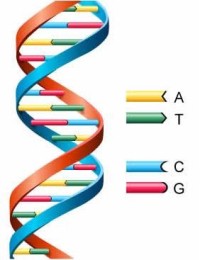 Part of being human is being categorical. This means putting ourselves and things into endless categories, assigning names and establishing hierarchies. Our penchant for fragmenting the nameless whole into named parts and then using these named parts to construct a newly-named whole is deceptively seductive and constitutes what we call commonly “objective reality.”
Part of being human is being categorical. This means putting ourselves and things into endless categories, assigning names and establishing hierarchies. Our penchant for fragmenting the nameless whole into named parts and then using these named parts to construct a newly-named whole is deceptively seductive and constitutes what we call commonly “objective reality.”
We tightly grasp our sense of objective reality and the categorization it represents; to loosen our grip is to risk losing our ground, even though that ground is a nominal illusion. Upon examination, objective reality differs between individuals, each of whom experience one’s own subjective reality. This is why for some the glass is half-full and for others half-empty.
In an essential way, we constantly inhabit and move between two worlds of being, one absolute and the other relativistic. The world of absolutes imposes order through categorization, rigid rules, and the drive to affix labels based on determining difference. The relativistic world, on the other hand, seeks connections, relationships, and attempts to dispel rigid categorizations as too confining and arbitrary: a transcategorical way of being.
One of the hallmarks of modernity is its relativistic nature. Just as Einstein ruptured the fixity of Newton, changing our conception of the physics of motion, time and space, so our relativistic cultural reality has ruptured the fixity of nationality, gender and race. Nothing remains solid when it is shown to be embedded within a system of relationships, as all things are from a relativistic point of view.
Accordingly, categorizations which were considered normal and fixed have loosened. Gender, which used to simply be limited to men and women has now been split into varied new sub-categories which differentiate between chromosomal gender and personal gender identity. Of the two, gender identity has further split into categories of hetero, cis, bi, gay, lesbian and trans. We are unable to accept that personal gender identity is infinitely variable; our penchant for categorization always asserts itself.
This happened with religious identity, and categories of race are following the same pattern. We’ve always had categories of white, black, asian and so forth, all broadly (and often incorrectly) based on assumptions of chromosomal distinctions. But race, too, is now subject to personal race identity, as evidenced in the revelations about the NAACP leader in Seattle who, chomosomally white, now transracially identifies herself as a black woman and physically altered her appearance in accordance with that identity, much as transgender individuals alter theirs.
It’s become confusing for many, yet the most troublesome element is not the relativistic changes of context, but the urgings to assign and tightly grasp onto categories. Culturally, categories confer legitimacy through naming, for unless a thing is named and has become a “part” it cannot be distinguished from the whole. The difficulty arises when categorical assignment becomes aggressive and demanding of others.
Our two realities of being seek reconciliation, but it comes slowly if at all. We are not comfortable simply resting in the wholeness of being with its purely relativistic ground of no distinctions; it feels too groundless. Thus our categorical being kicks in and imposes newly updated names and classifications, which then become the fixed rules to be broken. We proceed accordingly, each way of being pushing and pulling, restraining and propelling, inhibiting and exciting the other, finding ourselves “between a rock and a hard place” in an effort towards reconciliation.
Such is the cultural and personal challenge of our time, played out variously in fundamentalist and liberationist movement power struggles over explicitly external rules and policy, and the powerful but mostly hidden emotional forces of being which establish each internal human life.





Be First to Comment